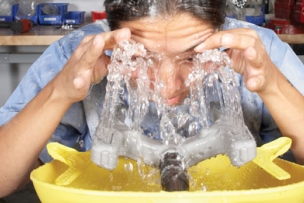Ansell is a global supplier of personal protection (PPE) equipment solutions designed for workers in a wide range of industries. Ansell's customers include businesses engaged in the Manufacturing, Agriculture, Healthcare and Scientific sectors, as well as many other business sectors. Ansell has developed a global presence that includes sales, operations and manufacturing sites in North America, Latin America, Europe and Asia and employs more than 15,000 people worldwide. Ansell's position as a market leader has evolved over more than 100 years of history and can be attributed to our history of providing innovative protection solutions to workers through a deep understanding of the worker experience.
In many parts of the country, August brings about the dog days of summer. Temperatures skyrocket, humidity is high, and heat stress among workers poses a major threat. According to OSHA, every year dozens of workers die, and thousands more become ill, while working in extreme heat or humid conditions. Safety managers are responsible for keeping workplaces free of safety hazards, including protecting workers from extreme heat.
While establishing a heat illness prevention program and providing workers with opportunities for hydration and rest helps mitigate risks, it’s crucial to consider how personal protective equipment affects workers’ body temperature and overall comfort. It’s no surprise that PPE material selection is a major consideration. Safety apparel and other protection solutions with benefits such as moisture management are key to ensuring workers stay cool, comfortable and protected. As workers perspire, PPE garments can stick to their skin when the material becomes damp and heavy, and even change shape – all factors that lead to discomfort. Safety managers should look for PPE that wicks away moisture from the skin and dries quickly.
Breathability also goes hand-in-hand with moisture management. PPE made from heavy materials can cause heat-related illnesses among workers during relatively mild work activities. Breathable materials help regulate temperature by allowing air and moisture to easily pass through the material, preventing heat and sweat from getting trapped, and as a result causing body temperatures to rise. Selecting lightweight breathable solutions can make a major difference in maintaining workers’ comfort, productivity and performance in the heat.
Ultimately, it’s up to safety managers to determine the proper PPE for both the task at hand and the worker environment. Fortunately, safety apparel manufacturers haven taken note, and developed PPE innovations that leverage textile and coating technology innovations, providing increased breathability and moisture management capabilities. Choosing breathable clothing solutions can not only help prevent illnesses during the hottest months of the year, but can also continue to foster worker compliance during one of the most demanding seasons of the year.








Talk to Us!
Leave a reply
Your email address will not be published. Required fields are marked *